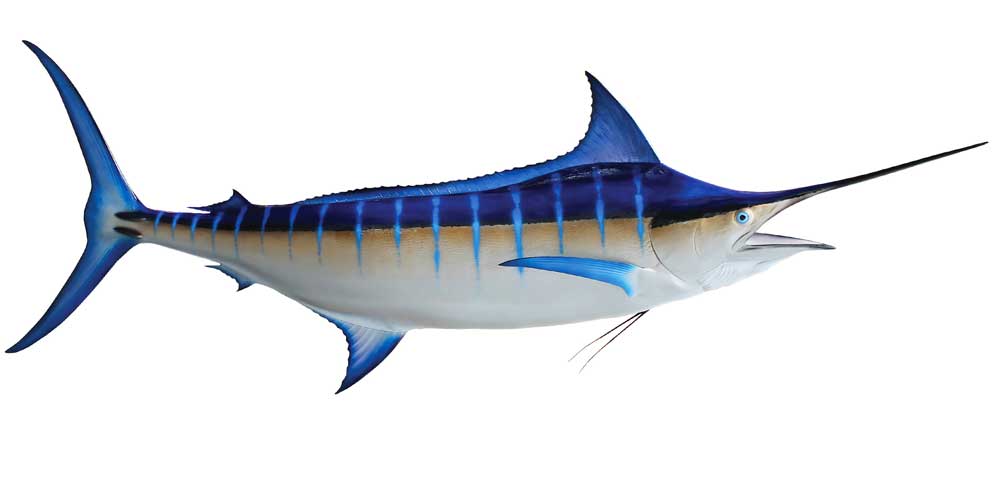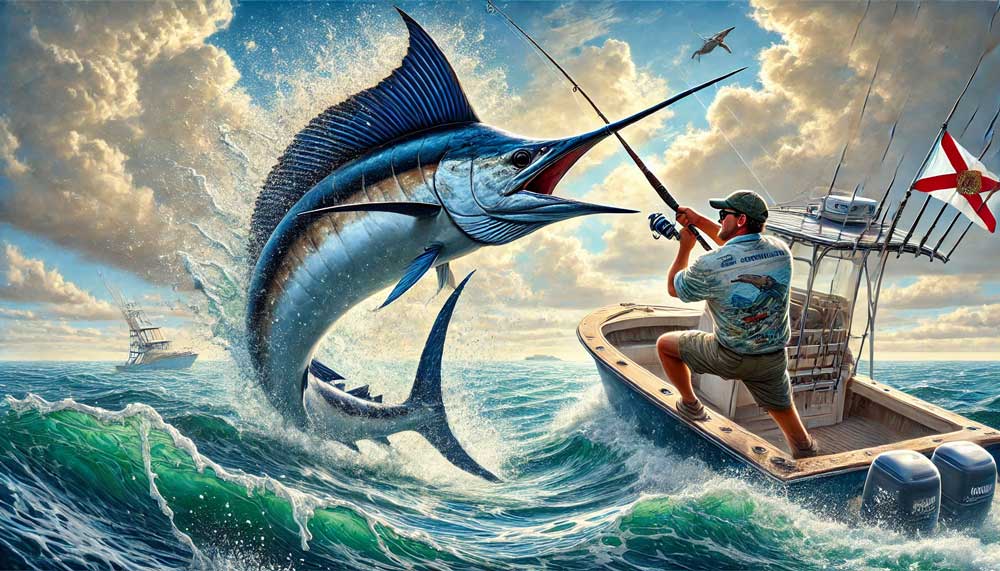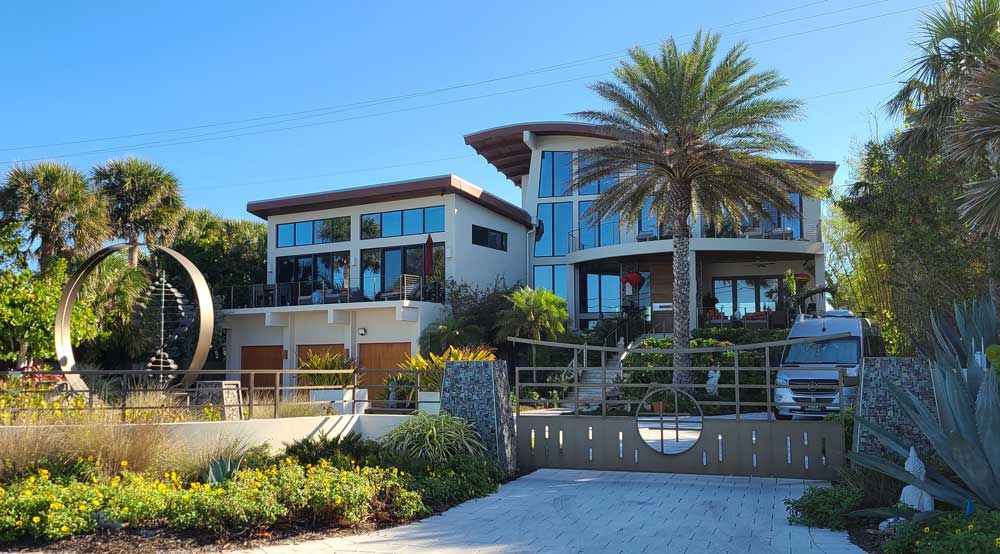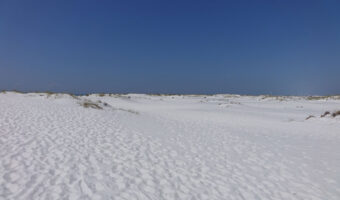Blue Marlin – Beautiful Swordfish in Cobalt Blue

The large predatory fish Blue Marlin belongs to the billfish family and lives in the open seas of the Atlantic and Indo-Pacific. It rarely approaches the coasts. The Blue Marlin is one of the most sought-after fish worldwide – powerful, fast, majestic. If you’re fishing in Florida and want to take on the challenge of catching a marlin, this article is just right for you.
Blue Marlin – the most Important Facts in Brief
- Occurrence & Top Spots in Florida
In Florida, you’ll mainly find this fish in the deep waters of the Gulf Stream, i.e., offshore. Particularly known for marlin tours are: Key West, Islamorada, Panama City Beach, Fort Lauderdale / Miami (for Big Game Charter) - Best Time to Fish for Blue Marlin
The season for Blue Marlin or Makaira Mazara in Florida is June to September. During these months, water temperatures are ideal, and many tours focus specifically on this species. - Fishing Methods & Requirements
Method: Mostly trolling is used, i.e., fishing with artificial lures or ballyhoo.
Required: Lots of patience, strong arms – and experienced skippers on site!
Tip: Be sure to book a professional Big Game Charter tour, many providers supply the equipment.
Blue Marlin – not for Beginners
It is one of the most sought-after fish worldwide – powerful, fast, majestic. The Blue Marlin has an elongated body that is only slightly flattened on the sides with a long sword. If you’re fishing in Florida and want to take on the challenge of catching a marlin, you’re in the right place. Of all billfish, the Blue Marlin is most bound to tropical climates. However, the blue fish can heat up its eyes and brain, allowing it to cope in cooler waters below 21°C.
The Blue Marlin typically weighs between 70 kg and 230 kg and can weigh up to 580 kg with a size of up to 3.75 m. Deep-sea anglers have reportedly caught marlins weighing 680 kg. The back is black-blue with 15 narrow cobalt-colored bands, the belly is silver-white. The dark blue dorsal fin is accompanied by rather brown-black other fins with a blue sheen. The anal fins are silvery-white at the base.
This is What it Looks Like
The Blue Marlin has a thick, elongated scale coat deeply embedded in the skin. The long sword is thick at the base and round in cross-section. The head profile is steep, the body highest just behind the head, from where it slopes back. The Blue Marlin has two dorsal fins: The first is long and extends over most of the body. It is supported by 39 to 43 fin rays. The second dorsal fin has six to seven fin rays and is symmetrical to the second anal fin. The larger first anal fin has 13 to 16 fin rays. The sickle-shaped pectoral fins are supported by 19 to 22 fin rays. The rod-shaped pelvic fins are somewhat shorter.
Sport anglers are thrilled by the Blue Marlin’s speed and power. Suitable baits include large live baits such as young dolphins or bonitos, mullets, mackerel, barracudas or ballyhoo, and various artificial lures. The Blue Marlin is good to eat but is usually released by sport anglers.
How Do I Catch a Blue Marlin?
Sport anglers are thrilled by the Blue Marlin’s speed and power. Suitable baits include large live baits such as young dolphins or bonitos, mullets, mackerel, barracudas or ballyhoo, and various artificial lures. The Blue Marlin is good to eat but is usually released by sport anglers.
Important: Anyone who wants to fish in Florida needs a Saltwater Fishing License. For guided tours, this is usually included in the price. A private half-day tour costs from about 800 USD, while full-day tours start at about 1200-1500 USD. Group tours are cheaper but rarely focus specifically on Blue Marlin.




